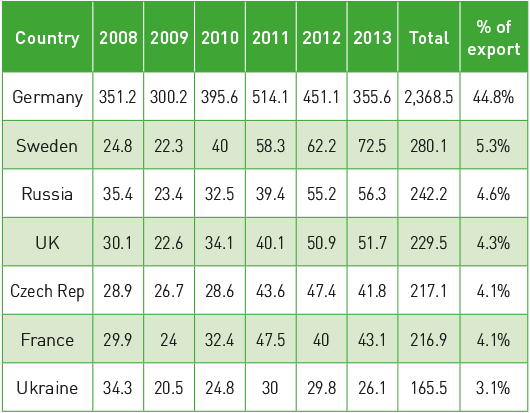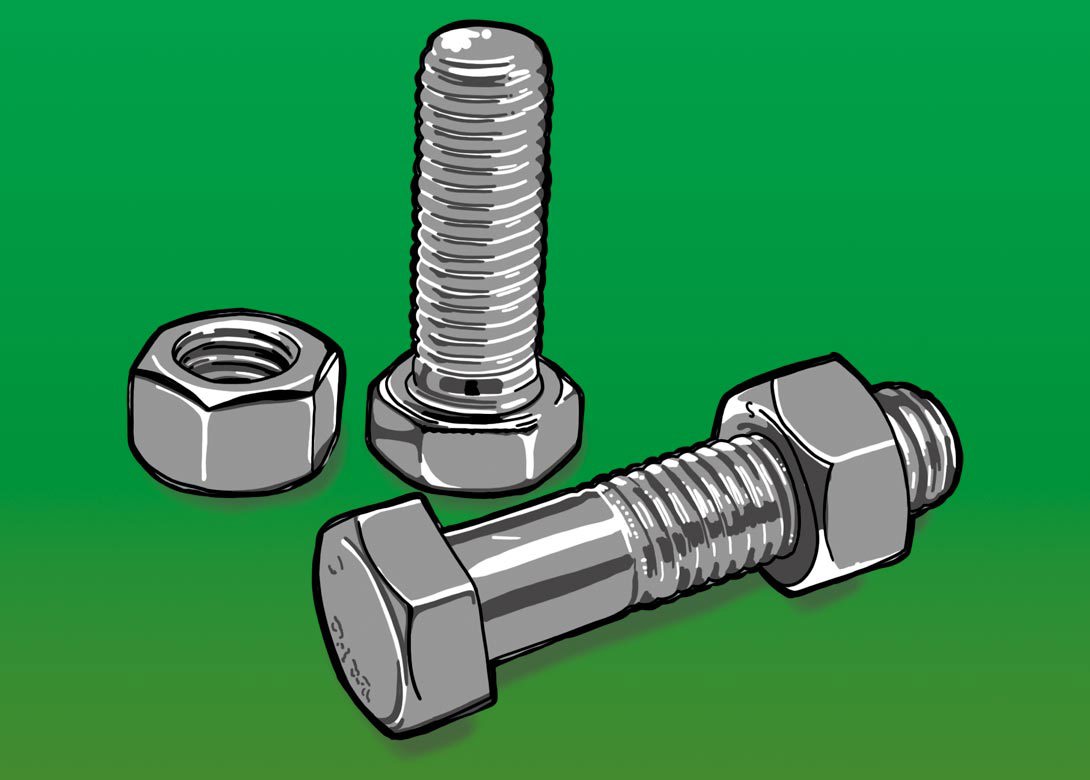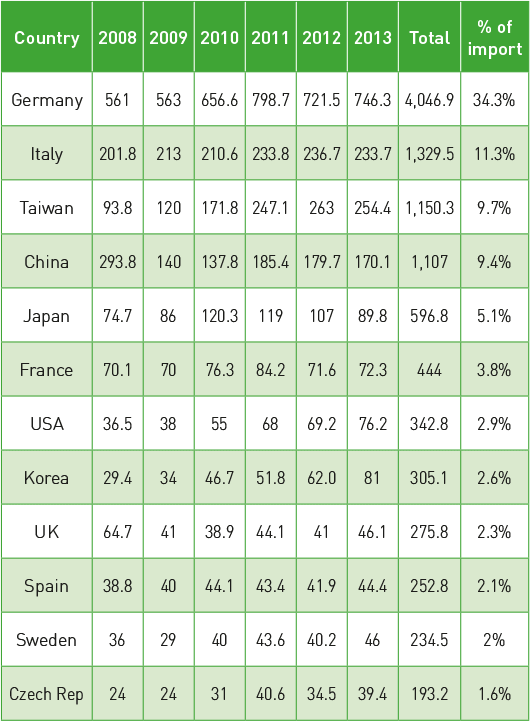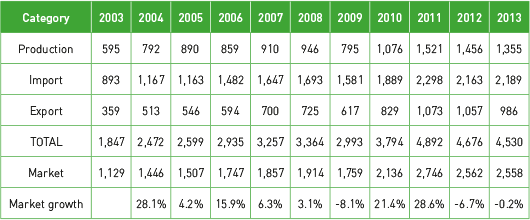A decade of the Polish fastener market
27 July 2015
This report is extracted from an article by Marek Łangalis, doctor of economic sciences and fastener entrepreneur at the Polish stainless steel fastener specialist Olfor Marek Łangalis. The original article was published by ‘Fastener. Rynek elementów złącznych’ which gave permission for its publication.
The fastener market provides administrative work for tens of thousands of people and at least a couple of thousand in production. It is time to recognise the importance of the market for fasteners, the global value of which is computed in billions of dollars.
A few years ago, Professor Jerzy Hausner, who was a senior advisor to the then Polish deputy prime minister responsible for economic affairs, spoke wryly of Poland as the “assembly plant of Europe”. The implied criticism was that inward investors to Poland limited their activities to assembly plants for cars, refrigerators, washing machines, etc. He saw leadership in this activity as a high-risk for the economy because the assembler could literally move its operation to another country within months in the pursuit of lower labour costs.
It has been more than ten years since this statement was made and somehow I do not really see that the assemblers have somewhere to move. Not to China, because the sea transport adds so long to delivery times. There has long been talk about Ukraine and sometimes about Russia but in the light of recent events neither is likely to be a place where foreign capital will readily look to locate new factories.
Poland on the other hand is a large country with a growing, stable, economy and rapidly improving infrastructure. What Professor Hausner wryly pointed out is salutary for the fastener industry. It is the assembly halls that consume the most items for fastening, riveting or welding. Location of subsequent factories and the development of existing facilities each brings increased consumption of fasteners – although often foreign companies bring with them foreign suppliers so the new demand does not always translate into additional business for domestic suppliers.
Production
During the past eleven years the production of fasteners in Poland has increased by approximately 130%. In 2003 output was worth approximately PLN595 million (142.5 million euros) increasing by 2013 to approximately PLN1.355 billion. The peak year was 2011 when production reached PLN1.521 billion.
The largest production companies historically are Śrubena Łańcucka (now KOELNER Łańcucka Fabryka Śrub), Śrubena Unia SA, Marcopol sp z.o.o, Gaweł Zakład Produkcji Śrub SA, and ASMET. Apart from these a lot of smaller companies specialise in production of non standard and special request fasteners, small batch volumes or limited ranges. Often these are small, family businesses, employing only a small number of people and serving a narrow group of customers. However, analysis of the production trends since 2003 show that Polish companies have no reason to be ashamed of the position in Europe (Table 1).
Table 1: Polish fastener production 2003-2013 [PLN million]. Source – Own analysis based on official statistical estimates.
During these eleven years, a three times increase in production represents a large momentum, with significant increases in 2004 (33%), in 2010 (35%) and in 2011 (41%). During 2010 and 2011 the industry came out of the slump caused by the economic crisis that started in the last Quarter of 2008. The growth dynamic in 2004 was mainly due to Poland joining the EU.
In the first half of the year demand increased as local construction warehouses ordered product at the reduced rate of VAT. In the second half sales were boosted by free access to EU markets.
Export
A measure of the success of Polish entrepreneurs is the scale of exports (Table 2). In 2003 it was PLN359 million and in 2013 PLN986 million, a 175% increase.
Table 2: Polish fastener exports 2003-2013 [PLN million]. Source – own analysis based on official statistical estimates.
Over 2011 and 2012 exports amounted to more than one billion US dollars. Export is not just the domain of large companies and manufacturers, but also small traders specialising in several products. Robust growth in exports over the last decade is to the major credit of Polish entrepreneurs from an industry that has grown to have a very strong position in the central European market. This success is due to a combination of the scale of domestic production and to Polish companies success as high volume importers of fasteners. The main export market for Polish companies is Germany, which during the eleven years represented between 30% and 49% of total exports (Table 3). In the last 6 years Germany increased to represent almost 45% of total fastener exports. This dependence on the German market is due on one hand to it being the largest in Europe alongside Italy and also to the logistical advantages of its geographic proximity to Poland, making it efficient for German trading companies to use Polish production.

Table 3: Polish fastener exports 2008-2013 by countries [PLN million]. Source – own analysis based on official statistical estimates.
Interestingly, in the last few years the second-largest recipient of Polish products has been Sweden, which appears to relate to the strong Polish links of companies like Bufab AB, Gunnebo AB and ESSVE. Poland has still not, though, developed the potential for trade with Russia. The size of its market and its fast growing industry – although recent events have stalled this development – should result in higher turnover. Traders with Russia complain, however, about the levels of unpredictability (not least as result of exchange rate movements) and Russia’s quite specific approach to business. An important aspect is also the penetration of the Russian market by fasteners from China at the same rate of duty as products originating from the EU.
Import
The Polish market, however, is not based on domestic production, or exports, but really on imports (Table 4). The majority of the market is serviced by Polish companies sourcing fasteners from the largest producers in the world, namely China and Taiwan, or buying goods from the large wholesalers in Europe. The import growth has been huge, which means that the entire market is growing. The increase since 2003 amounted to 145%. Although not so dynamic as exports, in the past three years imports have exceeded PLN2 billion. Even in the crisis year of 2009 the impetus of Polish importers did not significantly weaken.
Table 4: Polish fastener imports 2003-2013 [PLN million]. Source – own analysis based on official statistical estimates.
Most fasteners come to Poland from Germany: In 2013, the value was PLN746 million. The second largest source is Italy, which, however, for the last 6 years stabilised at a level of PLN200 million. The strongest dynamic has been from Taiwan. In 2008 imports were valued at PLN94 million, by 2011 they were worth already more than a quarter of a billion PLN.
Table 5: Polish fastener 2008-2013 and by country [PLN million]. Source – own analysis based on official statistical estimates.
While China is the world’s leading producer of fasteners the ability to import from that country depends to a large extent on the trade defence measures applied to its products by the European Union. The cost differential between production in China and Poland, taking into account the cost of transport and payment of duties, is minimal. Added to this are: The risk of exchange rate variation; the cost of finance; and the long lead time between order and delivery. Sourcing from China does not always mean buying very cheap.
The entire market
The methodology to establish the size of the Polish market is:
Production + import – export
This, however, does not give the complete picture. It only shows the scale of consumption in Poland, not the overall potential of Polish companies, some of which have become regional leaders. Therefore, I have suggested a dual approach to the subject (Table 6). On the one hand, market size computed actually: E.g. production + import – export, which gives an indication of the potential of the domestic market. Production value is expressed in selling prices. Imports provide a margin to trading companies so effectively undervalue both total consumption and their significance to it.
On the other hand, we have the potential of Polish companies producing items and trading them. In 2013 the Polish fastener industry reached a level of transaction of around PLN4.5 billion, 145% higher than eleven years previously. The potential for domestic market can be estimated at more than PLN2.5 billion.
Interestingly, in the last eleven years the industry only three times experienced a crisis. In 2009, understandably, when the entire industry suffered, but also in the years 2012-2013. The same was true in 2014.
The market showed people were waiting for some extra boost to the development of the economy so that in recent years there have been falls in both production and foreign trade.
Nevertheless the fasteners market is huge. Take into account that many companies also offer many other products and the companies in this industry represent a huge bankroll, giving work to thousands of people and showing huge increases in their activities. In recent years growth has been harder and there have been tougher regulatory and competitive environments. Let us hope that the next 2 – 3 years will show that the Polish market is still the fastest growing in Europe among the large Member States.
Table 6: Market size of fasteners in Poland 2003-2013 [PLN million]. Source – own calculations.
*All calculations concerning the market of fasteners in the above article do not include products such as: Yacht fittings – non-threaded nails, fasteners, and wire rigging.







